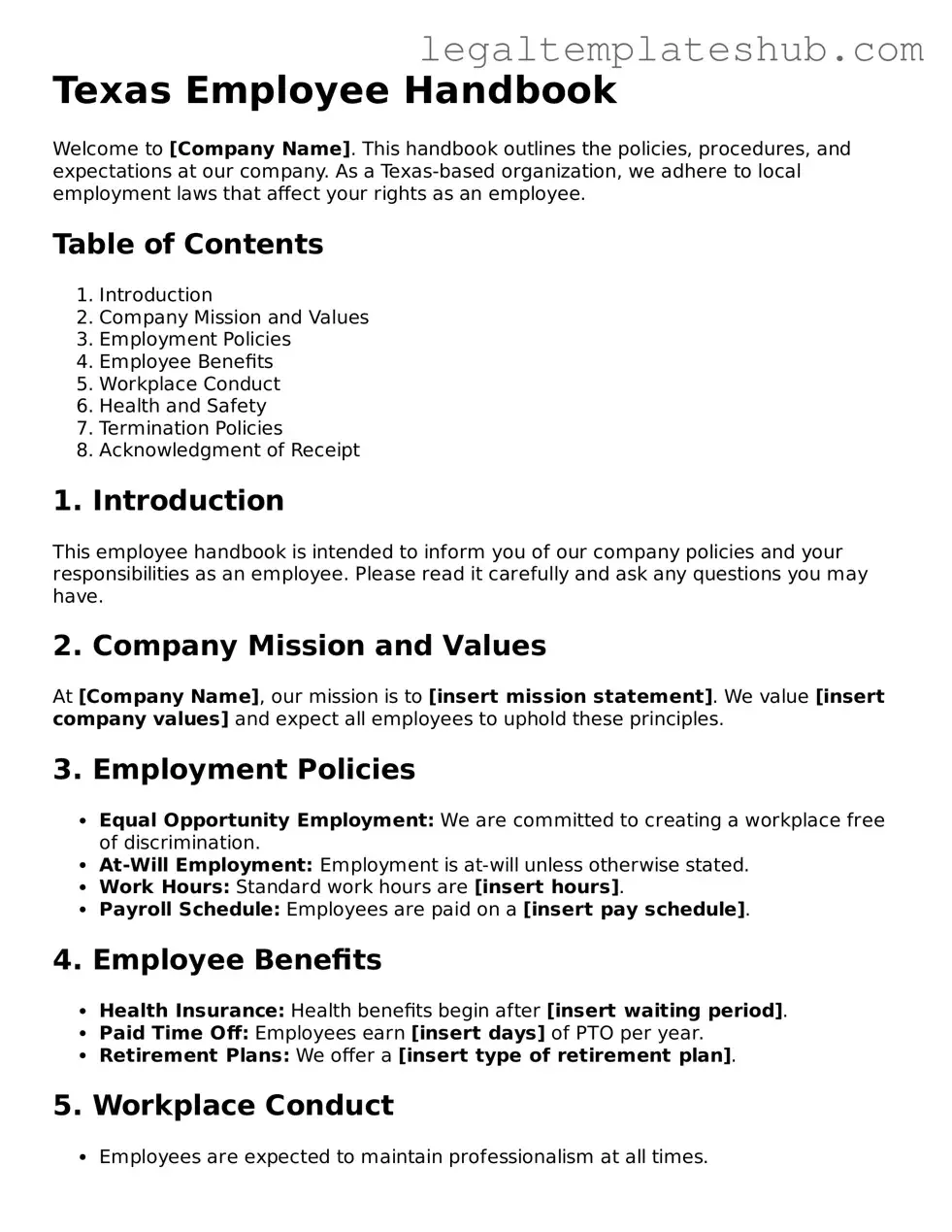Printable Employee Handbook Document for Texas
The Texas Employee Handbook form is a crucial document that outlines the policies, procedures, and expectations of an employer in relation to their employees. It serves as a guide to help employees understand their rights and responsibilities within the workplace. For a smooth onboarding process and to ensure compliance with Texas labor laws, it’s essential to complete this form accurately.
Ready to get started? Fill out the form by clicking the button below!
Access Editor
